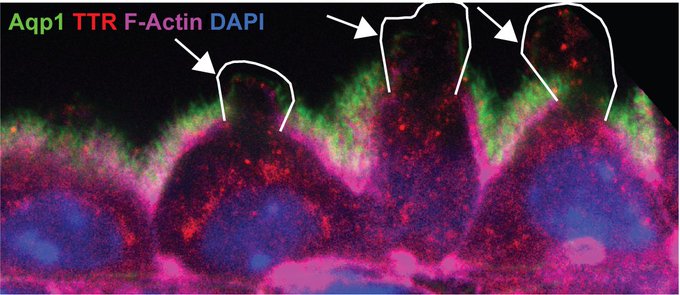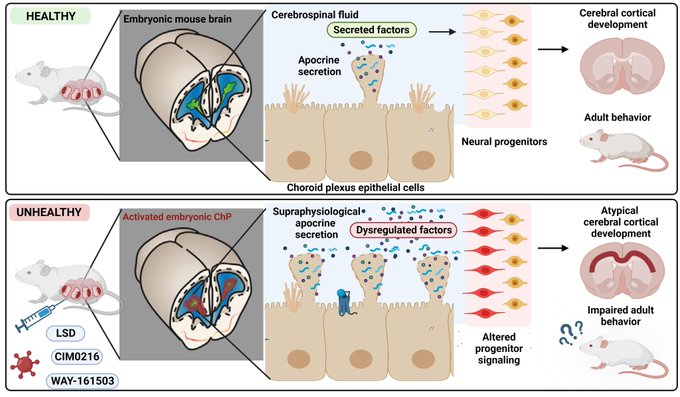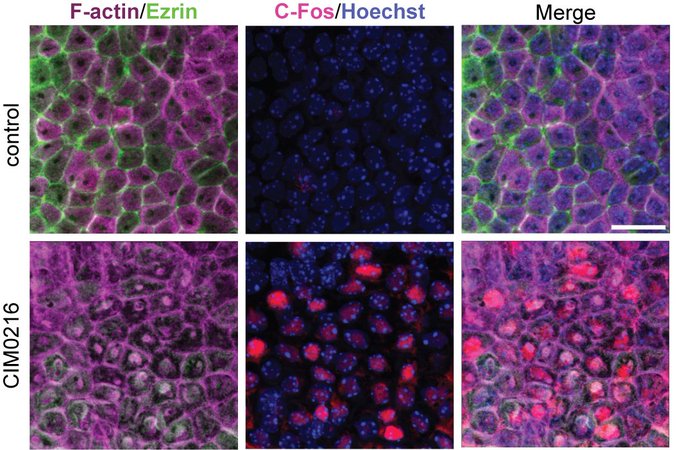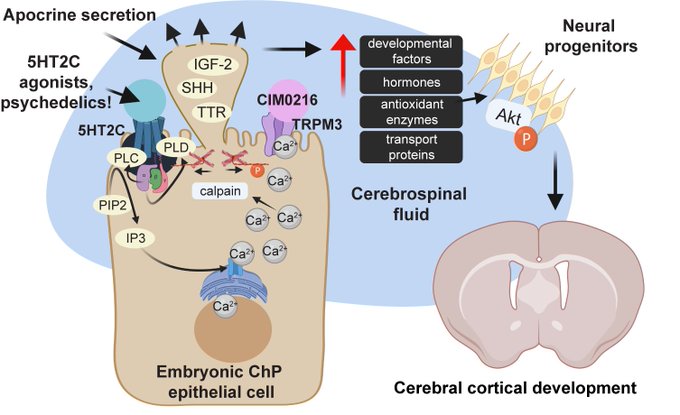This approach also allowed the first demonstration that a clinically-relevant dose of the psychedelic compound LSD quickly passes from mother to embryo and dysregulates ChP-CSF signaling. Crucial to consider amidst tremendous enthusiasm for therapeutic psychedelic use! 🍄7/
3
1
14
Replies
🚨Preprint alert -
@ScienceYael
leads work revealing that various maternal exposures, like illness 🤒 or psychedelics 🍄, cause excessive apocrine secretion from embryonic choroid plexus epithelial cells into CSF w/ life-long brain & behavioral impact! 1/
5
46
187
New secretion mechanism 🔬 we built on prior lab work to show that ChP epithelial cells use a high-capacity mode of exocytosis: "Apocrine secretion". Other fluid-producing epithelia do this too, allowing significantly more release than vesicles! 2/
1
2
7
Apocrine secretion happens in embryonic & adult ChP. We identified a mechanism converging on sustained intracellular calcium signaling and calpain-dependent cytoskeletal remodeling. It can be evoked *in embryos* by a range of maternal stressors!🤰3/
1
2
9
In healthy embryonic mice, apocrine secretion releases a host of proteins w/ developmental signaling roles 🚦into CSF, activating neural progenitor cells in the ventricular zone. So what happens during pregnancy if maternal exposures overstimulate this secretion? 4/
1
2
6
Supraphysiological stimulation of apocrine secretion during embryonic development => messed up brains! 🧠 We saw a shift from Tbr1+ to Satb2+ neurons in deep-layer excitatory populations & behavioral deficits in 3-chambered social approach, marble burying, & vocalizations. 5/
1
1
6
Our findings also highlight a straightforward approach to evaluating the potential for compounds to disrupt the ChP-CSF system: immediate early gene expression and apocrine structures in embryonic ChP (30’ after maternal exposure!) Here we show sensitivity to TRPM3 agonists. 6/
1
1
5
💡 Understanding ChP apocrine secretion opens new avenues for researching developmental disorders & how prenatal factors may contribute, underscoring the relevance of studying the ChP-CSF system as a key player during
#BrainDevelopment
. 8/
1
2
11
THANK YOU to the star scientists who made this possible, what a project:
@ScienceYael
led thesis work with plenty of help from Joshua Head,
@Freshdipley
,
@_Elizzabbethh
,
@NeilCDani1
, and Towia Libermann
@BIDMCHealth
. ⭐️ Please share, we look forward to discussing these data! 9/9
0
0
12










